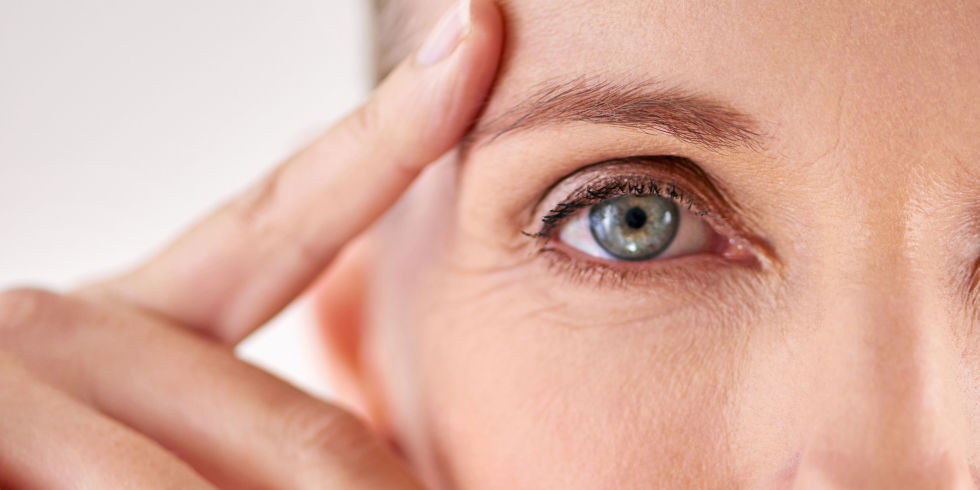Tight skin, rough knuckles, chapped lips? Say hello to winter, about to wreak havoc from head-to-toe. To show it who’s boss, we asked Dr Justine Hextall, consultant dermatologist on behalf of The Harley Medical Group, what we need know to keep skin happily hydrated throughout the cold snap.
From your brows to your feet, here’s how to treat your skin – starting now.
1) You still need SPF
‘Just because it is winter, it doesn’t mean you should put away your suncream. Whilst there is less UVB around in winter, levels of UVA (or UV-ageing as it is known in the dermatology world) are still significant enough to age our skin. As UVB is the wavelength that stimulates vitamin D production, levels can drop in the winter months and if necessary we can supplement with oral vitamin D3.’
2) Consider professional skin treatments
“Winter is a great time of year for skin treatments. We always worry about peels and laser treatment in the summer months. With sun exposure before or after such procedures there is a higher risk of unwanted post-inflammatory hyper-pigmentation. Autumn and winter therefore represents an opportunity. I would however suggest planning ahead, to make sure your skin has time to settle and be at its peak for the party season.
3) How to keep hydrated
‘Your skin will become drier and often more sensitive with the onset of colder weather and central heating. Make sure you keep hydrated during the day, swap your coffee for green tea which has great anti-oxidant effects. Gentle cleansing is a must, you need your skin barrier to be as healthy as possible so that it can retain vital moisturiser. As a rule of thumb if your skin feels tight after washing it is likely that the cleanser you are using has disrupted your skin barrier. Skin should feel calm and hydrated after washing, if you are reaching immediately for your moisturiser you may want to consider a gentler cleanser.
4) Tweak your daily skincare routine
‘If you are having to apply a moisturiser during the day it is likely your skin routine needs tweaking. Try swapping your lotion to a cream and massaging it into your skin for 30 seconds to maximise its effects.
5) Book in for a facial
‘Winter skin is often dull, so I recommend a professional facial about every three to four weeks. That’s how long it takes your skin to move through the full life cycle of skin cell growth so I often advise people to opt for a superficial peel or exfoliating treatment in order to slough off dead skin and allow better absorption of active topical skincare. Regular facials will help to keep your skin clean, clear and hydrated whilst maximising your everyday skincare regime too.’
6) Protect lips from ‘lick eczema’
‘Licking sore lips will only exacerbate dryness and can cause what is referred to as ‘lick eczema’. Make sure your lips are sealed with an effective ointment at all times, particularly before eating and drinking as some foods like tomatoes which can irritate chapped lips. I recommend Epaderm Ointment or Cicaplast Balm B5 by La Roche Posay. If you are skiing remember lips are vulnerable to sun burn. Zinc oxide is a fantastic physical sunscreen and will help to reflect the UV away from the skin of your face and lips.’
7) Prevent dry, chapped hands
‘Hands are very high risk for becoming chapped and sore in the winter months. New mothers constantly washing hands often come and see me in the winter months. My advice is to avoid baby wipes as they can contain preservatives that trigger hand eczema and for everyone to wear gloves when washing. Dermol 500 is a fantastic moisturising soap substitute that is mildly anti-bacterial, it is very useful if frequent hand washing is necessary. At night apply a rich layer of hand cream under cotton gloves. After a few nights, the skin barrier will start to heal and the difference is often amazing.
8) Monitor scaly skin for dermatitis
‘If you notice scaling around your nose and eyebrows in the winter months you may be developing a dermatitis thought to be exacerbated by yeast. Cold winter weather is also a known trigger. If you also use a very gentle skin wash and moisturise twice a day it will help. Sometimes an anti-inflammatory cream may be needed too for a short time, and your doctor can advise here. As with most skin conditions early intervention often stops them in their tracks.’
9) Consider a foot peel
‘Feet often become dry and cracked in the winter months. Exfoliating frequently and applying an effective moisturiser always helps, but for many there just aren’t enough hours in the day. This is where the Skin Republic Foot Peel comes in. This amazing treatment is in essence a chemical peel for feet. Don’t be fooled if your feet feel no different in the morning. In a few days, you will be essentially shedding your exoskeleton. Expect to lose layers of skin, unattractive as it is, the results are baby soft feet.’
10) Use bath time to hydrate
‘Baths are a gift to dry winter skin. Not only do they provide the all-important relaxation to switch of those skin damaging stress hormones; baths are a marvellous opportunity to hydrate skin.












